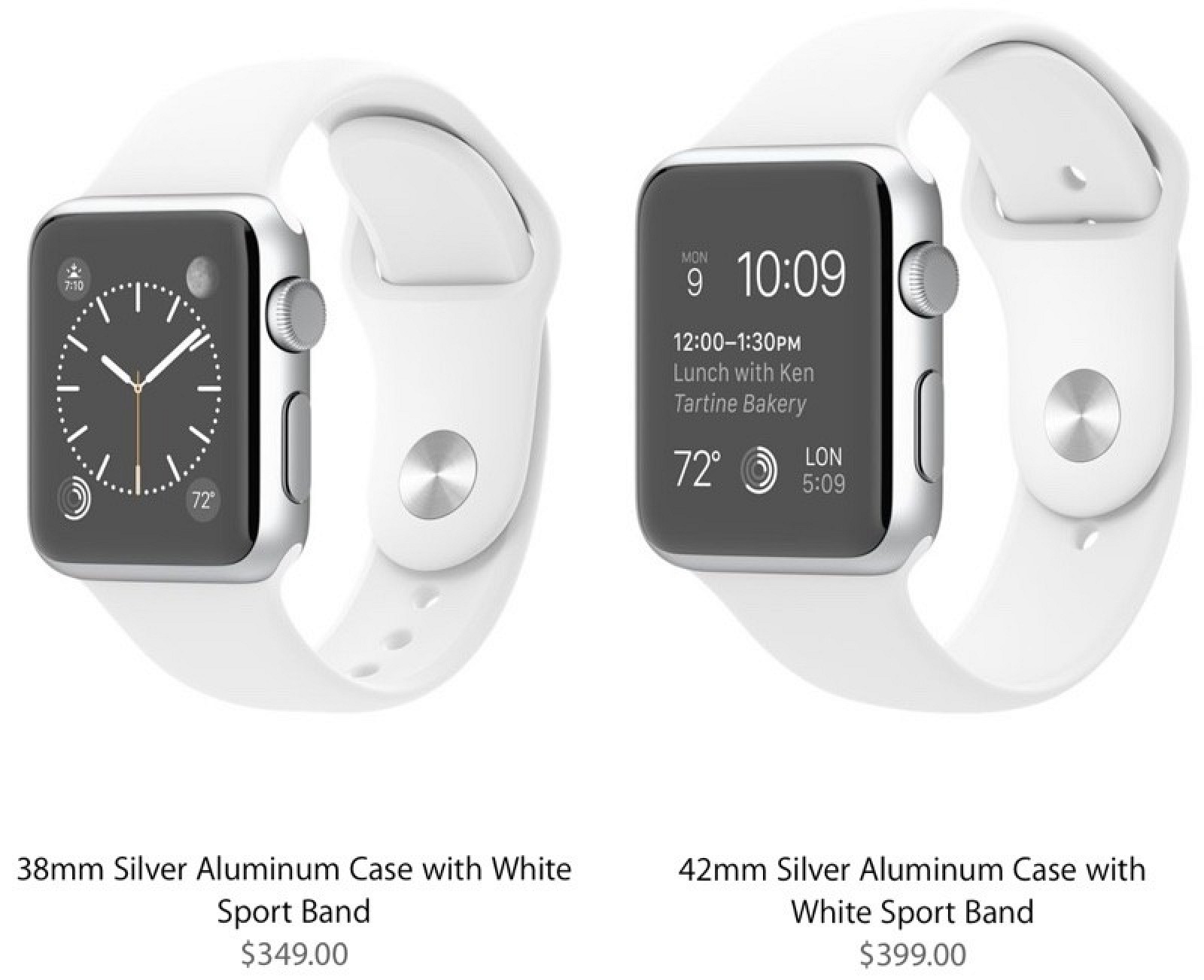Apple Watch
Apple's long rumored wearable

On September 9, 2014, Apple finally unveiled its long-rumored wearable device, the Apple Watch, aka Watch. While many expected the wearable to be called the "iWatch," Apple actually opted to use the Apple symbol () followed by "Watch" for the device's name. According to Apple's head of design Jony Ive, Apple has been working on the device for three years. Apple CEO Tim Cook has said that Apple's objective with the watch is to "change the way you live your life."
The Apple Watch is designed to be both functional and fashionable, available in two sizes of 38mm and 42mm (1.5 and 1.7 inches), with six different casing materials and six separate interchangeable band options in a variety of colors. Organized intothree separate collections, from the simple "Sport" to the high-end luxury "Edition," the Apple Watch has been created to appeal to a wide range of tastes.
Prices for the device, which will be available launch in the first nine countries on April 24, 2015, start at $349 for the aluminum Watch Sport collection. The stainless steel Watch collection starts at $549, while the the gold Watch Edition collection starts at$10,000 and goes as high as $17,000.
Designed with either an ion-strengthened or flexible sapphire display (depending on model), all of the Apple Watches include an HD Retina screen, sapphire-covered sensors built into the zirconia backing, and an NFC chip to allow the devices to work with Apple's Apple Pay mobile payment service.
The Apple Watch interface, much like its exterior, has been created with end-user customization in mind. Apple has designed several unique watch faces that users can choose from, featuring traditional watch designs, whimsical characters, animated images, and more, all of which are "extensively customizable." According to Apple, one Apple Watch can have millions of different appearances. Apps on the device are organized into a unique cluster design for quick and easy access.
As with all of its products, Apple has carefully considered the way people will interact with and use the Apple Watch, developing both a unique operating system (WatchOS) and unique input methods for the device. While it does allow for touch input, Apple Watch also includes a "Digital Crown" located on the right side of the body, which lets users zoom, scroll, and select elements on the Watch without covering the screen. The Digital Crown also serves as a home button.
A second physical button below the Digital Crown allows users to bring up a list of contacts and then communicate with friends by sending quick drawings, messages, animated emoji, and a heart beat, drawn directly from the watch's included sensors.
Apple Watch takes advantage of new pressure-sensing technology called "Force Touch" and is able to determine the difference between a tap and a press, enabling a range of contextually specific controls. A unique notification system allows notifications to be relayed in a subtle way through gentle vibrations using the "Taptic Engine."

There are several different sensors built into the Apple Watch, which allow it to measure metrics like steps taken, calories burned, and pulse rate. Movement information is relayed to two separate fitness-related apps, giving users an overall picture of their daily activity.
Apple's Watch is designed to be a companion device to the iPhone, and as such, it requires an iPhone to function. The Watch is not a standalone device because it relies on the iPhone for many features like relaying notifications and messages. In fact, initial Apple Watch apps will be entirely powered by the iPhone to preserve battery. The Apple Watch will last for 18 hours per charge with mixed usage and up to 72 hours in Power Reserve Mode, which limits functionality.
No comments:
Post a Comment
Leave you comment here...